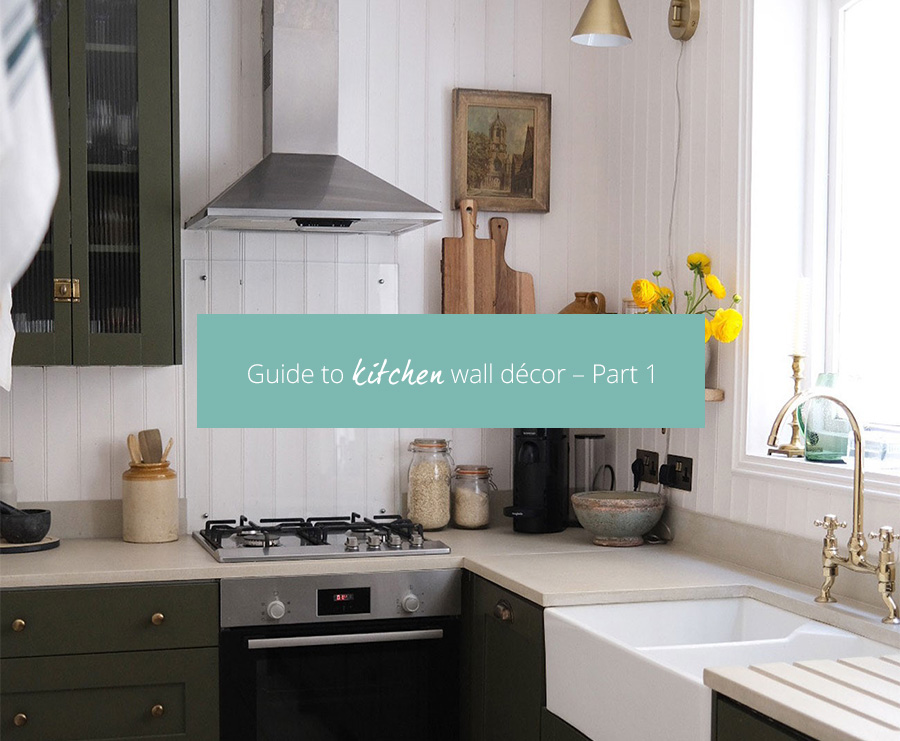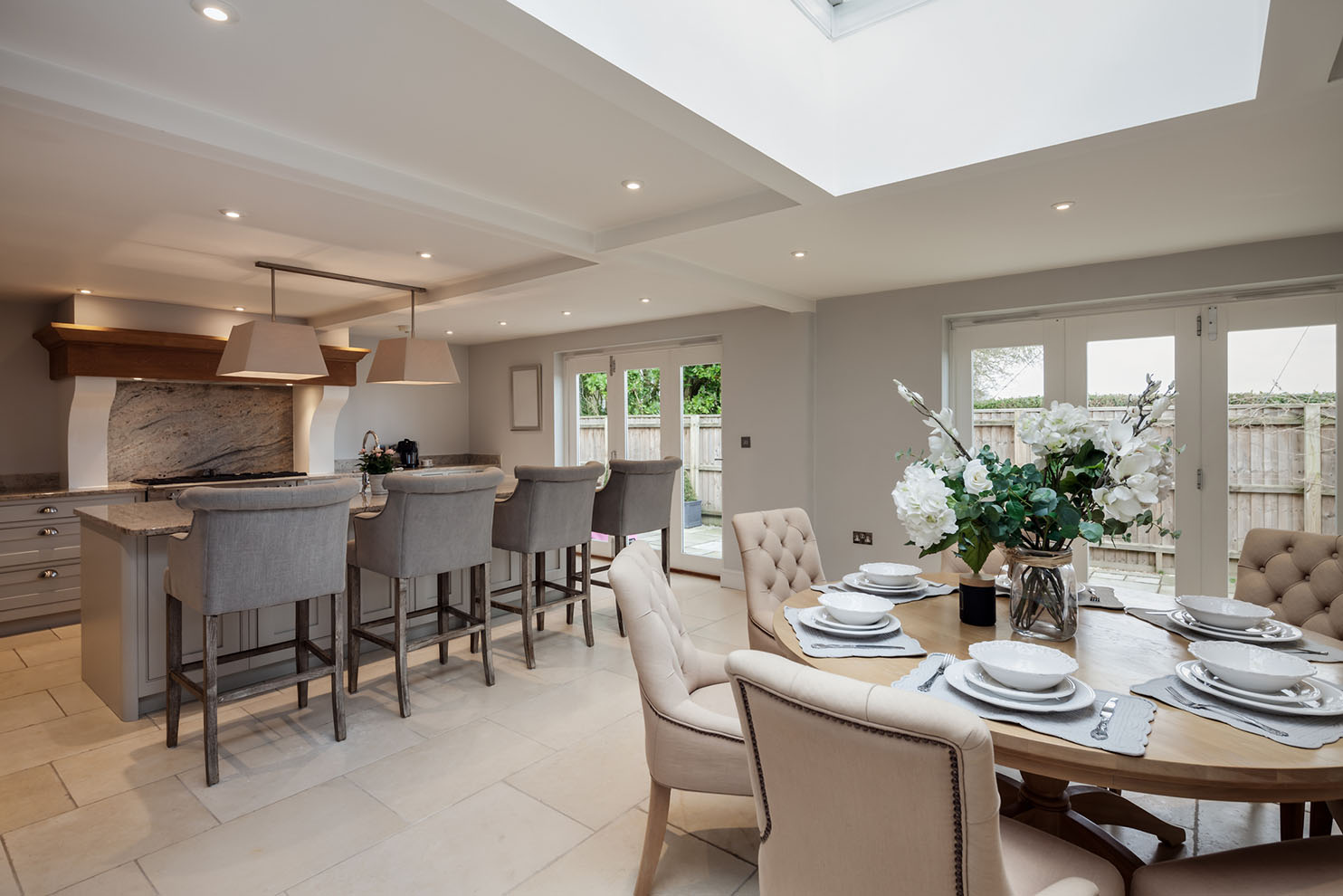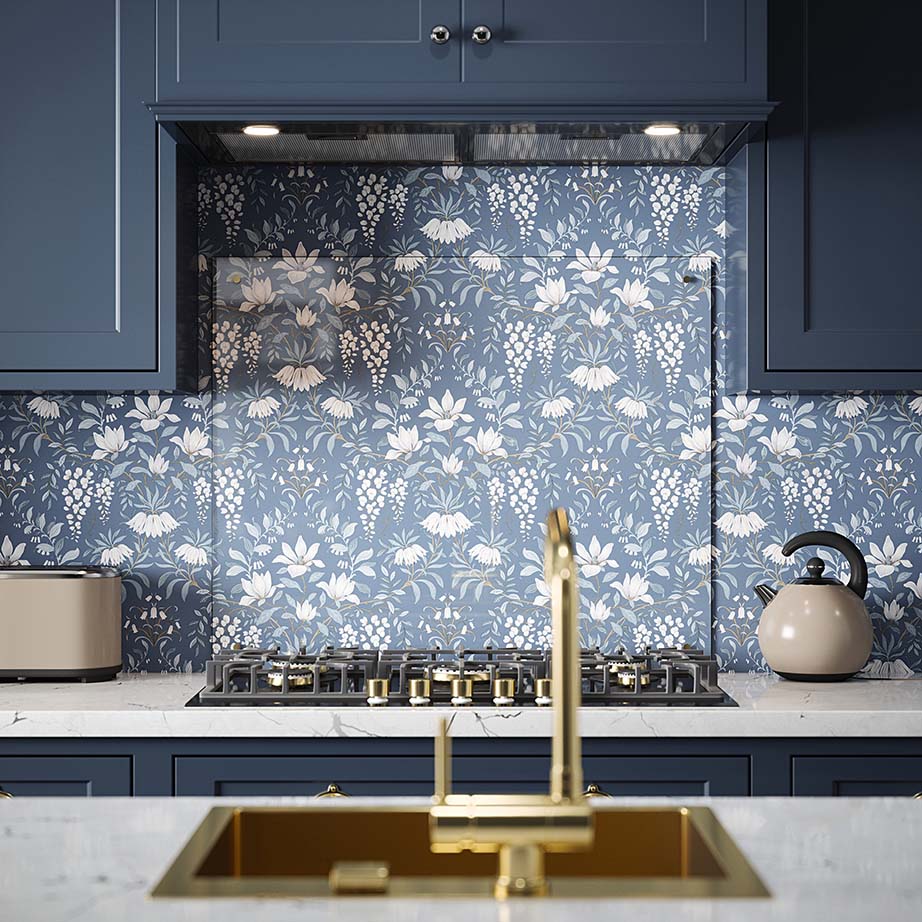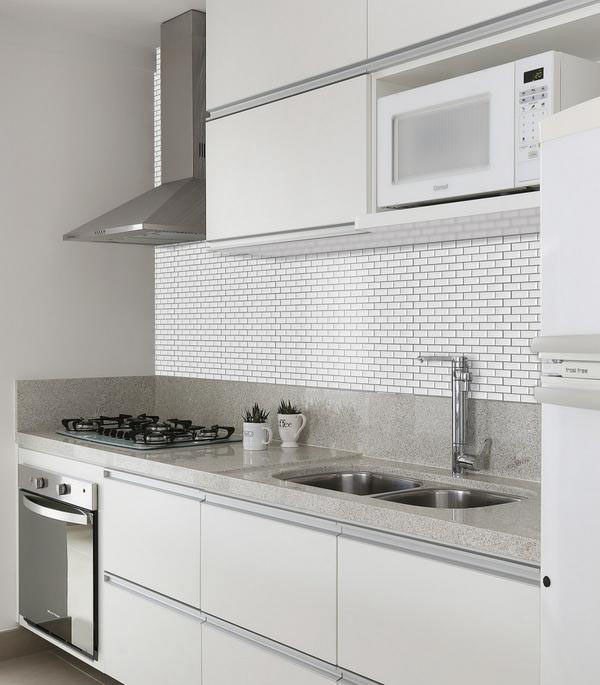Guide to kitchen wall décor – Part 1
Tiles and paint were once the only products found on kitchen walls.
But times have changed.

While both are still very popular choices, options have moved on to include specialist wallpaper, panelling and ink-jet printed tiles. In many kitchens most of the wall space is covered by wall hung kitchen units. However, interior designers are moving towards kitchen designs that incorporate shelving providing a more spacious, open, and airy feel while exposing more of the wall.
Below Kitchen Compare looks at various wall covering options.
Paint:
The most important thing to consider is finish and only then should you choose your colour. Any products used need to be able to withstand steam and moisture as well as be tough enough to deal with regular wiping down and cleaning.
Matt or Flat Matt: typically, is better in lower-traffic areas that don’t need wiping down regularly. While smooth matt paint is good at covering imperfect walls, it tends to absorb moisture so is not ideal for kitchens.
Silk: is a mid-sheen finish which looks slightly polished and reflects a bit of light. Silk can be wiped over easily which makes it practical and can be used in kitchens however if you have less than perfect walls, the lumps and bumps may show.
High Gloss: is the shiniest finish and reflects lots of light – so is perfect for paler colours. To look its best, the surface must be in good condition. Today high gloss is primarily used on woodwork so would be a good choice for kitchen skirting boards and windowsills.
Acrylic Eggshell: has less of a sheen than silk and looks like the surface of an eggshell! It sits somewhere between matt and a silk finish and gives a classic look and feel. It is more washable and scrub-able and can be used on both walls & woodwork. Being tough and durable makes it a good choice for kitchens.
Specialist: several specialist paints have been developed over recent years to be moisture and steam resistant. These paints often have mould resistant formulations, are actively designed to fight all common types of fungal growth, and are usually guaranteed for a period of time. However, these paints can be significantly higher priced than standard emulsion paints.

Panelling:
Becoming more and more popular, panelling offers great versatility while making it easy to create a statement. Relatively easy to install, panelling can be made from different materials though the most common is wood as it is hard-wearing. Traditional tongue and groove and shaker panelling are popular choices but need to be well sealed, primed and finished with appropriate paint. If this is done, then your panelling should be moisture and steam resistant, key for the kitchen.
Wallpaper:
Not the most obvious choice for kitchen walls, but due to high-end media coverage and stunning designs, the demand for wallpaper has increased in recent years. Manufacturers are producing wider ranges of specialised solutions – some are classed waterproof and can be hung behind sinks or hobs while others are classed as being water-resistant so can withstand the odd splash or two. Standard wallpaper can also be used, but the room must be well ventilated with an extractor fan as well as a window. In this instance wallpaper should be placed away from direct contact with water and protected using a decorator varnish. Another way to protect wallpaper behind the sink, range or hob is to install a clear glass splashback ensuring the continuity of the wallpaper design. Wallpapers can create a sense of colour and fun and create quite the statement.

Tiles:
Tile choice is vast. Materials vary from ceramic and porcelain to natural stones such as marble, onyx, travertine, and limestone. Thanks to digital technology, natural stone effects can now be replicated onto porcelain tiles. While it’s easy to get carried away with look and design, it’s important to also ensure that your tiles last. Ceramic tiles are less expensive, easy to cut, install and maintain but they are not as hard-wearing as porcelain ones. Natural stone tiles are softer and more porous but require more maintenance and need to be sealed from time to time. Mosaic tiles are still popular for creating borders or zoning areas and metro-style tiles, currently very popular, can be laid down in several different ways such as herringbone or basketweave, to add interest and drama to your overall kitchen design.

The Compare Network
Copyright – Insight Retail Group Ltd 2025 All rights reserved